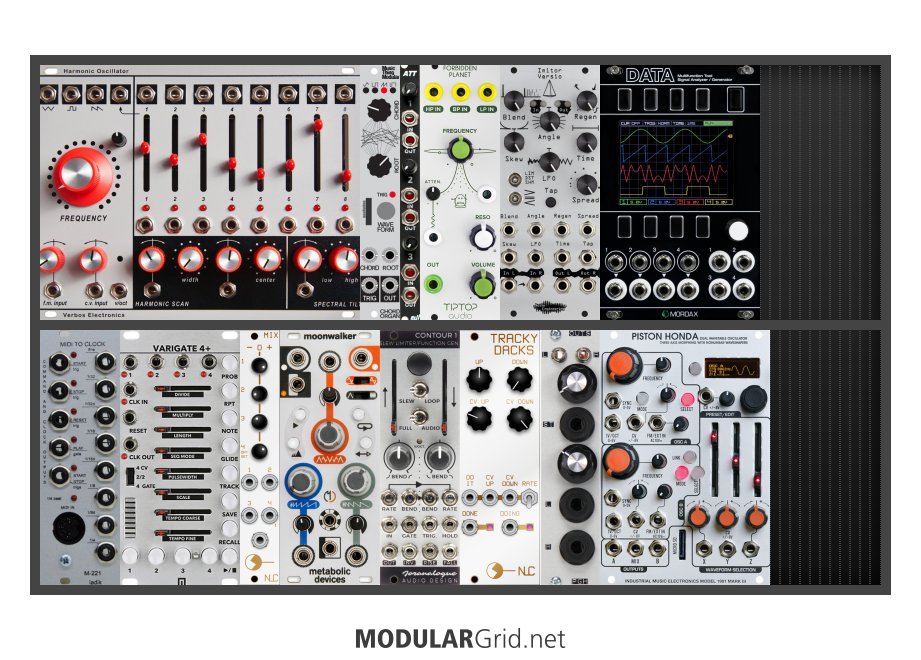The point about utilities being the secret sauce of modular is interesting. I guess, like Nick said, its hard to grasp at first because unlike oscillators, samplers, filters, envelopes, LFOs etc, 'utilities' don't really exist in the conventional world of music and are unique to modular (to my limited knowledge).
Sure they do! Let's look at an actual instrument...in this case, bass clarinet, as I know those like the back of my hand.
While you won't have a sampler on a wind instrument, everything else actually IS THERE...it's just not apparent. The "oscillator" then becomes the vibrating reed that energizes the air column, "filter" is all sorts of timbral modifications that can be done with fingering, altering embouchure, etc, "envelopes" are controlled by breathflow and tonguing, and "LFOs" are whatever you do to induce vibrato...embouchure movement, changes in breathflow, physically moving the instrument, etc. Plus the "controller" is all of those keys and pads and stuff. But are any of these things "modular", per se? Again...sure. Modern compositions are chock-full of what you'd call "extended techniques"...and one that comes to mind is using a trombone mouthpiece instead of a single-reed mouthpiece on a tenor sax. Sounds pretty "modular" to me!
I live in Australia which has unbalanced mains power. How much of a factor is noise? I've read that modules tend to put out a pretty hot signal, but yeah I might just follow Jim's advice and try without, then attenuate, then balance. I'm only running it into either an octatrack or external soundcard.
With UNbalanced power (which we also have in the USA), yes, isolation becomes important to deal with all sorts of sonic crud, hum, etc. And one other useful point: if you get an output module that has a balanced output via transformers (like Happy Nerding's Isolate), you can overdrive the transformers a bit and get a nice signal warmup. That's great for basslines and percussives, to get them a little more crunchy and in-yer-face.
Re VCAs: what's the difference between a VCA and an envelope/LFO module? also VCA vs attenuator?
A VCA (stands for Voltage Controlled Amplifier) is a circuit that controls gain. You feed a signal in one side, then send a control signal to it, and the original signal is now under the control of that control signal, which can be all sorts of modulation signals. There's two topologies, also...AC-coupled and DC-coupled...and two types.
AC-coupled VCAs are definitely for audio ONLY. These don't have DC coupling, so they can't pass signals below the subsonic range. As a result, AC-coupled VCAs tend to be logarithmic in response so that their dynamic changes fit with what human hearing considers to be changes in "apparent loudness", which we perceive on the logarithmic dB scale.
Then there's DC-coupled VCAs. These can pass DC, which means they can be used to control the amplitude of modulation signals. And since the changes these make are linear, it's possible to use these VCAs to modify modulation levels to make the modulation follow specific scalings, etc which are VERY necessary for oscillators, VCF cutoffs, etc. But also, there is a hazard in having these as your output VCA(s) as the DC they can pass isn't something you can hear...but your monitors will notice, and enough DC fed to a speaker will cause it to pop as well as also potentially causing amplifier damage.
It's also worth noting that VCAs usually don't provide a gain factor higher than 1, meaning that if you send 2.5V into a wide-open VCA, you should get 2.5V out the other side. Some do, however, and these are often useful at the end of the audio path...either as a preamp for the mixer, or to "push" the level after the mixer.
Envelope generators and LFOs are modulation sources. You can feed their outputs through VCAs to control their levels, but they themselves aren't designed to be the control circuit for the level changes. Instead, a VCA needs a modulation source to be fed to its control input so that its gain factor can be changed to anywhere between factors of 0 to 1, imposing those changes on the VCA's thruputted signal.
Attenuators also control amplitude. But attenuators can control CV voltage levels, so if you need to have a device track at 1/2, you'd use an attenuator in the device's control path, and this would allow you to have half-scaling for that device. This can be very useful for manipulating VCF cutoffs so that they can track in proportion to, but not the same as, the main pitch CV. Plus, there are attenuverters...these have their zero-point at the CENTER of the pot, and their full outputs are at either end...but with one end, the signal is inverted. These are great for inverting modulation signals for a number of things; you can cobble together a crossfader, for example, with two VCAs and an attenuverter to provide the negative control signal for one of them.
-- ffsimpson

